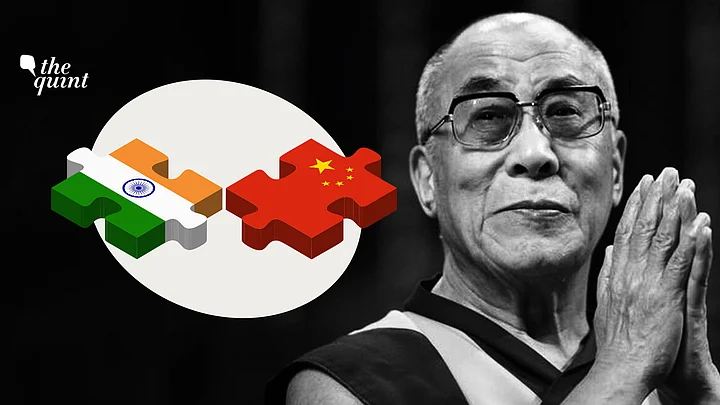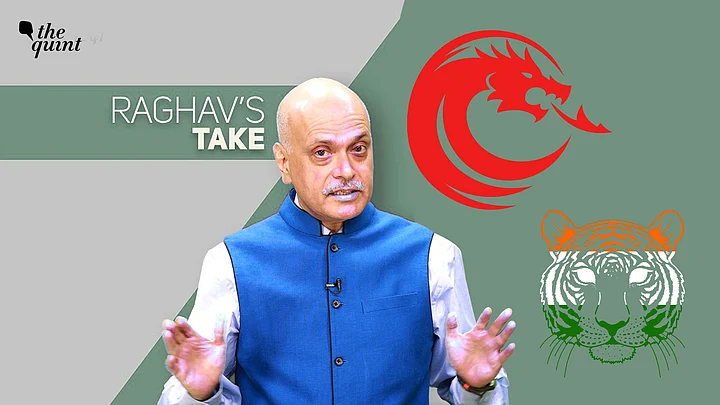Chinese People's Liberation Army troops and civilians, earlier in July, had come on the other side of the Sindhu river in the Demchok region of Ladakh to protest against the celebrations of Tibetan spiritual leader Dalai Lama’s birthday.
However, even as talks to resolve border disputes continue, senior government officials stated that the Chinese have erected tents on the India side of the Charding Nala in Demchok in eastern Ladakh, Indian Express reported.
CHINESE PRESENCE REMAINS IN DEMCHOK
Indian government officials said that even though they have asked the 'so-called civilians' who are the occupying the tents set up in Demchok, to go back, 'their presence remains'.
Back in 1990s, India-China joint working groups had agreed that Demchok and Trig Heights were disputed points on the Line of Actual Control (LAC).
Moreover, 10 other areas that are either mutually agreed as disputed or where the two sides have differing perceptions of the LAC were recognised:
Samar Lungpa, Depsang Bulge, Point 6556, Changlung Nala, Kongka La, Pangong Tso north bank, Spanggur, Mount Sajun, Dumchele, and Chumar.
5 FRICTION POINTS ADDED SINCE LAST YEAR
Over the last year, five more points of friction have been added to the LAC in eastern Ladakh, after the stand-off began, officials were quoted as saying.
Officials said, these five friction points are
KM120 in the Galwan Valley
PP15 in the Shyok Sula area
PP17A in the Shyok Sula area
Rechin La
Rezang La
In a significant defensive development, at least 50,000 additional Indian troops have been deployed to the Indo-China border over the past few months.
According to a report by Bloomberg, Indian military personnel, as well as fighter jet squadrons, have been shifted to three separate areas along the Chinese border, adding up to a strength of around 200,000 troops in the area.
This is a 40 percent increase in military deployment from the previous year.
CORPS COMMANDER-LEVEL TALK HELD IN APRIL
China had suggested the 12th round of Corps Commander-level talks to be held on Monday, 26 July. However, as India observes 26 July as Kargil Day, to commemorate its victory over Pakistan in 1999, the talks have been postponed, The Indian Express reported.
In order to discuss the disengagement and eventual de-escalation in eastern Ladakh, the 11th Corps Commander-level talks were held in April this year.
Despite the delay, officials have said, the two sides have been in constant touch with having exchanged nearly 1,500 messages since the standoff began, over the hotlines at Daulat Beg Oldie and Chushul.
SOME BACKGROUND
On 15 June 2020, 20 Indian troops, including their commanding officer, died in clashes with People's Liberation Army (PLA) soldiers at Galwan Valley. Although both countries have had several standoffs over the years, these were the first casualties at the Line of Actual Control (LAC) since 1975, indicating that the way the countries perceived the LAC dispute were different.
WHY HAS THERE BEEN NO PROGRESS?
As per sources, while India has been pushing for disengagement from all the friction points first, China wants de-escalation, and for the additional troops in the depth areas to go back to their original bases, before the rest of the friction points are disengaged.
Describing the current situation as 'stable', a government official said that though it has not yet reached the '2019 level', it is 'much better' than last year, The Indian Express reported.
He added that there have not been 'any transgressions' by China since February, nor any face-offs between the two armies. Moreover, he stated that though China is willing to disengage, they 'like to negotiate', and added that disengagement will take time.
CHINESE TROOPS ON ROTATION
China has been rotating its troops in eastern Ladakh, and is developing 'military infrastructure at a very fast pace', sources were quoted as saying.
The military infrastructure includes billeting, ammunition points, and artillery positions.
Moreover, in their depth areas, nearly four divisions of Chinese troops are positioned along the G219 highway that passes through Aksai Chin, connecting the troubled Xinjiang and Tibet provinces, the sources said.
Meanwhile, China was rotating its troops as quickly as within 10 days, when they were positioned on the north bank of Pangong Tso and on the heights of the Kailash Range in the Chushul sub-sector during winter.
For a first in decades, warning shots between the two sides had been fired in August-September of last year. After disengagement began in February, both sides pulled back their troops, which at the height of the standoff were just a few hundred metres apart at Rezang La and Rechin La.
PATROLLING POINTS 15 AND 17A
Within 2 days of the disengagement in February, the tenth round of talks took place for the other friction points, however, to no avail.
Indian troops have been blcoked from accessing their patrolling limits at the Bottleneck in Depsang Plains, as platoon-sized units of Chinese troops continue to be on the Indian side of the LAC at Patrolling Points 15 and 17A.
(With inputs from The Indian Express)
(At The Quint, we question everything. Play an active role in shaping our journalism by becoming a member today.)




